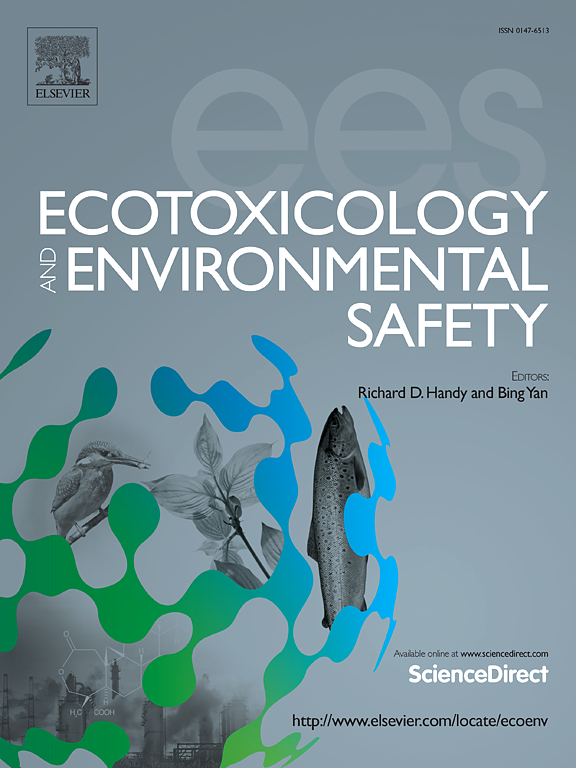镉暴露通过 PPAR 信号通路促进胡羊小肠和结肠的炎症反应
IF 6.2
2区 环境科学与生态学
Q1 ENVIRONMENTAL SCIENCES
引用次数: 0
摘要
随着环境中镉含量的增加,镉引起的肠道疾病给畜牧业造成的损失也在逐年增加。然而,大多数正在进行的研究活动都集中在人畜共患疾病方面,而不是从人为环境角度探索动物疾病的发生机制。本研究选择镉环境暴露下的应激胡羊来探讨炎症性肠病的发生机制。16 s、非靶向代谢组学和转录组多组学用于分析其肠道和肠道内容物的变化。结果表明,镉组有益微生物()明显减少,潜在有害微生物明显富集,这些微生物的变化在一定程度上影响了代谢产物(辛酸)的变化,导致肠道内脂肪酸减少。在镉离子和脂肪酸减少的共同作用下,PPAR 信号通路受到抑制,脂肪酸的转运和结合进一步减少,对肠道造成了非常严重的损伤。我们首次揭示了镉环境暴露下胡羊肠道损伤的机制,为微量金属环境暴露下肠道疾病的防治提供了新的方法。本文章由计算机程序翻译,如有差异,请以英文原文为准。
Cadmium exposure promotes inflammation through the PPAR signaling pathway in the small intestine and colon of Hu sheep
With the increase of cadmium content in the environment, the losses caused by cadmium-induced intestinal diseases to animal husbandry are increasing year by year. However, most of the on-going research activities focus on zoonotic diseases rather than exploring the mechanisms of animal disease occurrence from an anthropogenic environmental perspective. In this study, stressed Hu sheep under cadmium environmental exposure were selected to explore the mechanism of inflammatory bowel disease development. 16 s, untargeted metabolomics and transcriptomic multiomics were used to analyze the changes of their intestinal tract and intestinal contents. The results showed that the beneficial microorganisms () in the Cd group were significantly decreased and the potentially harmful microorganisms were significantly enriched, and the changes of these microorganisms affected the changes of metabolites (caprylic acid) to a certain extent, resulting in a decrease in fatty acids in the intestine. Due to the combined effect of cadmium ion and fatty acid reduction, the PPAR signaling pathway was inhibited, and the fatty acid transport and binding were further reduced, causing very serious damage to the intestine. We revealed for the first time the mechanism of intestinal injury in Hu sheeps under cadmium environmental exposure and provided new prevention and treatment methods of intestinal diseases under the environmental exposure to trace metals.
求助全文
通过发布文献求助,成功后即可免费获取论文全文。
去求助
来源期刊
CiteScore
12.10
自引率
5.90%
发文量
1234
审稿时长
88 days
期刊介绍:
Ecotoxicology and Environmental Safety is a multi-disciplinary journal that focuses on understanding the exposure and effects of environmental contamination on organisms including human health. The scope of the journal covers three main themes. The topics within these themes, indicated below, include (but are not limited to) the following: Ecotoxicology、Environmental Chemistry、Environmental Safety etc.

 求助内容:
求助内容: 应助结果提醒方式:
应助结果提醒方式:


